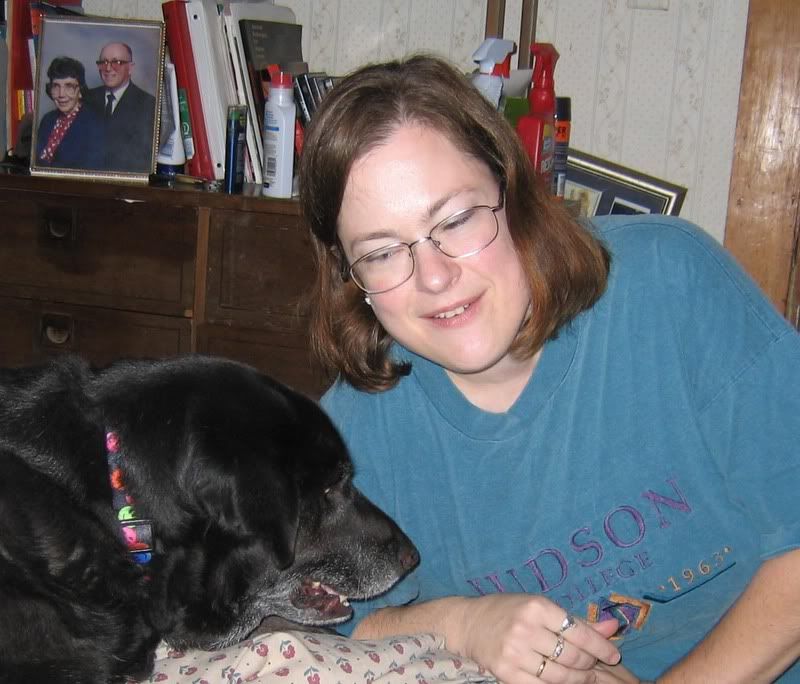Updates
Well, I've been getting a lot of stuff done.....just not much in the way of good photos to prove it. I finished "Day By Day" (my collaboration with my husband) but I am having trouble getting a decent photo because of its large size and the reflectiveness of it (I went perhaps a little heavy on the Stainless Steel paint....looks marvy in person, IMHO, but the camera objects). It is hanging proudly over our stairs. Perhaps I will try some different settings on the camera and see if I can get a decent shot to post.
I have also been doing a lot of testing with the acrylic paints and mediums. None of it is earth-shattering, especially if you are familiar with these products already, but here are some of the things I have learned:
1. Acrylic paint dries REALLY FAST, especially in thin layers, even if you water it down.
2. Adding Acrylic Glazing Liquid (Gloss) gives it a texture roughly like runny snot, but does extend drying time. It also makes brush marks far more evident. However, the results of adding it to fluid acrylics 1:1 vs. doing the same with water are almost indistinguishable except for the brushstrokes. It's just in higher dilutions that the difference becomes really obvious.
3. Playing with Glass Bead Medium is fun. GBM from different manufacturers can be quite different. Putting the GBM over dried paint, vs. mixing it in with wet paint and painting with it, vs. painting over dried GBM, all give different results. Really, I like the Glass Bead Medium over dried paint best because it is the most sparkly (yes, of course I have magpie tendencies, I collected beads for six years).
4. Liquitex Modeling Paste has a matte finish and is opaque. It is easier to paint over with fluid acrylics if you add a little glazing liquid (because it makes the paint more fluid-y). However, glazing liquid painted over modeling paste mixed with paint does nothing--no big surprise there as the glazing liquid is not meant as a top coat or finish. Not even sure why I tried that.
5. Liquitex Modeling Paste, because it is opaque and white, tints your paints. It made my Pyrrole Red into a kind of semi-Pepto-Bismol pink. However, if you paint over it instead of mixing paint with it, of course that defeats the problem.
6. Golden Fluid Acrylics are very, very concentrated.
7. Liquitex Modeling Paste and Liquitex Light Modeling Paste are somewhat different. The light is much less dense, but holds a pattern carved into it as well--however, its lesser density causes the marks to look different. It's hard to describe, but the regular modeling paste looks more like white clay when dry both in color and in the way it holds a mark, while the light modeling paste looks more like white styrofoam. According to the container, you should use the light modeling paste when you are making something for which weight is a consideration.
8. Liquitex Modeling Paste will crack a little while drying if applied to a flexible support (no surprise, it says that right on the label). The light modeling paste did not in my little test. Both are recommended for rigid supports.
9. GAC200 promotes adhesion of acrylic paint on glass and metal. It makes the paint adhere more uniformly. It also makes the paint more resistant to being scratched off. In my experiment, it did not create a situation where you could not scratch the paint off, but it was considerably harder to do with the GAC than without it. In my experiment, the glass was not etched, and the metal was not sanded.
10. Painting with watered-down fluid acrylics is tricky because the drying time is so short. It makes for poor blending under the conditions I used in my experimental painting. I painted the same painting again using Acrylic Glazing Liquid to dilute the paint, and this improved working time (open time) of the paint as well as blendability. I have not tried it with retarder, but I think I will try that soon.
11. Painting with fluid acrylics diluted with water on a surface with a canvas texture (such as acrylic paper) makes bubbles in the paint.
So, sorry for the looooooooooong post with no photos, but I hope this info might be of use to some people. If people are interested, I will continue posting results from my experiments.


0 Comments:
Post a Comment
<< Home